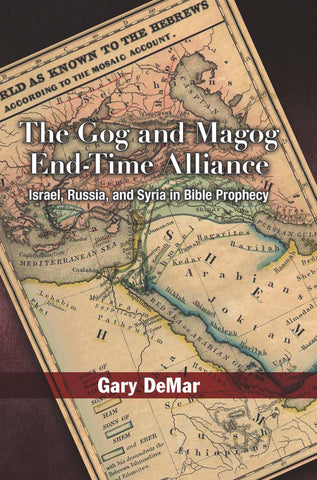Bible Prophecy Under the Microscope: Episode 19
Gary deals with current end-time claims about the situation in Damascus.
“When” a prophecy is said to be fulfilled is very important to know in determining what events fulfill the prophecy. Time indicators can tell us if the prophecy is going to be fulfilled in the distant future or in the near future. Sometimes a prophecy’s fulfillment is open ended. The New American Standard has “Damascus is about to be removed from being a city” (Isa. 17:1). According to Oswalt in his commentary on Isaiah, the Hebrew construction “hinnēh . . . mûsār is a participial construction indicating imminent action, ‘Behold, Damascus is on the point of being removed.’”
Joel Rosenberg, who believes that Isaiah 17 is a prophecy that has not been fulfilled, appeals to other chapters in Isaiah in an attempt to make his case that the Damascus prophecy is like Babylon, never really fulfilled:
In Isaiah 13, we read about the coming judgment/destruction of Babylon. But the context makes it clear that the prophecies will happen deep in the End Times, just prior to the Second Coming of Christ. In Isaiah 13:6, for example, we read, “Wail, for the Day of the Lord is near!” In Isaiah 13:9, we read, “Behold, the Day of the Lord is coming.” Both of these references indicate that the prophecies concerning the destruction of Babylon will occur in the last days leading up to the “Day of the Lord,” an eschatological biblical term that refers to the actual, literal, physical return of Christ to earth at the end of the Tribulation.
How can a prophecy state that “the Day of the Lord is near” (Isa. 13:6) when, according to Rosenberg, the prophecy hasn’t been fulfilled yet? John Walvoord, who Rosenberg quotes approvingly, makes a valuable comment about the multi-faceted character and application of the meaning of the Bible’s use of the phrase “the day of the Lord: “The ‘Day of the Lord’ is an expression frequently used in both the Old and New Testaments to describe any period of time during which God exercises direct judgment on human sin. The Old Testament records a number of times when Israel endured a day of the Lord, lasting a few days or, in some cases, several years.”
“Day of the Lord” is not code for “deep in the End Times, just prior to the Second Coming of Christ.” Isaiah 13 is a description of a localized judgment of a world power that existed long ago. Who did God raise up to judge Babylon? “Behold, I am going to stir up the Medes against them” (13:17a). There are no Medes today. We know from Daniel that Darius the Mede conquered Babylon (Dan. 5:30–31). To claim that after 2700 years the Damascus prophecy has not been completely fulfilled is to question the integrity of the Bible as skeptic Tim Callahan has done. “Being removed” does not necessarily mean “being removed forever.”

The Gog and Magog End-Time Alliance: Israel, Russia, and Syria in Bible Prophecy
What if we read Ezekiel 38 and 39 literally? Is it possible that the Gog and Magog alliance that was designed “to destroy, to kill and to annihilate all the Jews, both young and old, women and children” has already taken place? That’s exactly what The Gog and Magog End-Time Alliance attempts to show.
Buy NowGary deals with current end-time claims about the situation in Damascus. Assad’s fall in Syria has nothing to do with Bible prophecy and is not a sign of “things to come.” The same several Bible verses have been applied to countless current events in the past and all have failed to come to pass.
Click here for today’s episode
Click here for all episodes of Bible Prophecy Under the Microscope

